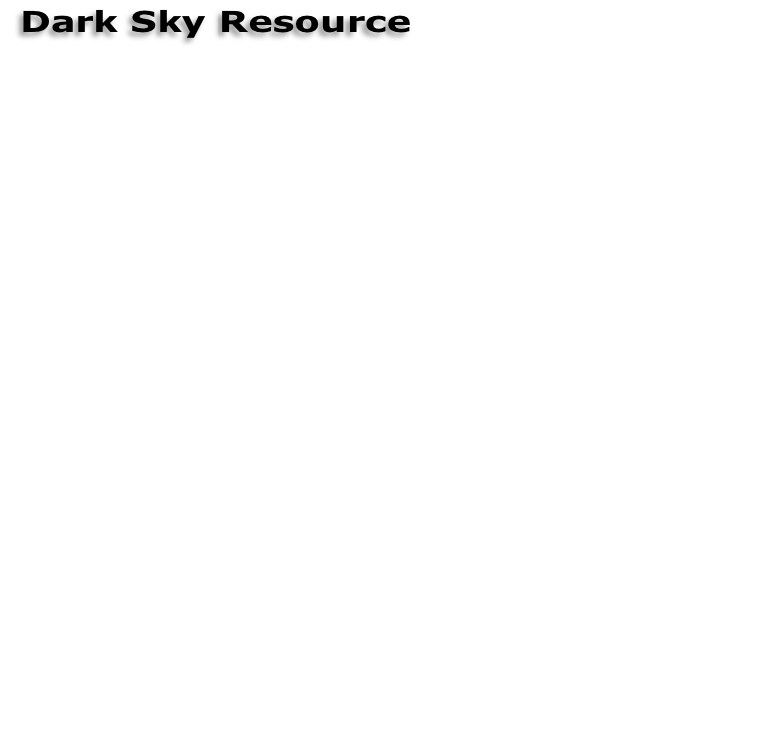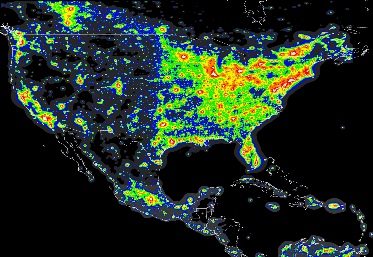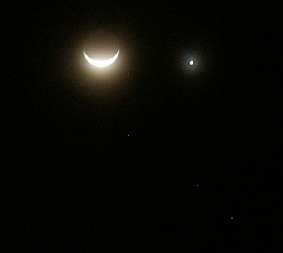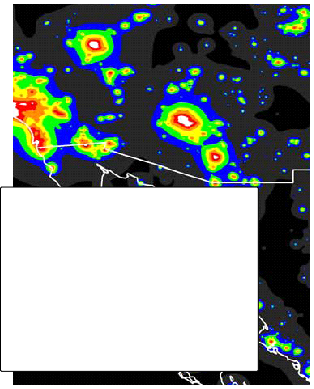
2015


Natural areas are dark at night but the photographs below show how much light is emitted from nearby cities. Yuma, Phoenix, and Tucson show sky glow from light pollution. But the Western Desert great night sky is a resource that is becoming increasing rare. This image shows North America's light pollution. Photos by P. Cinzano/F. Falchi (University of Padova) C. D. Elvidge (NOAA NG Data Center).

Arizona’s clear skies have long been an asset for major observatories. But now
the naturally dark, night sky, is recognized as important to wildlife and is becoming
an attribute to real estate.
The Western Desert has a night sky that shows off
the Milky Way -

Crescent moon and Jupiter.

See LOSING THE DARK the new Dark-
The smart use of outodoor lighting
can preserve the Arizona night sky while reducing electric costs for businesses and
homeowners.
The International Dark-
Learn more at: http://www.darksky.org
The “C” or crescent shaped black area in western Arizona still enjoys a dark, natural, night sky. Recent tests by WDA members used a Sky Quality Meter that registered 21.4 near Harquahala Peak which indicates this resource is still rated very dark.
Want to go stargazing? Check out weather at Saddle Mountain for stargazing here!
Nightscape conservation tips start with picking good outdoor fixtures for your home and business.
See more about the
2012 Night Under the Stars here.

Night Under the Stars -
At Alamo Lake State Park. join us for safe solar viewing on Saturday and great stargazing that night with the AstroVerde Astronomy Club.
| Homesteads |
| Mines |
| Trails |
| Courthouse Rock |
| Sunshine Sky |
| Nightscape |
| Desert Bighorn Sheep |
| Field Notes |
| Reptiles |
| Desert Life |